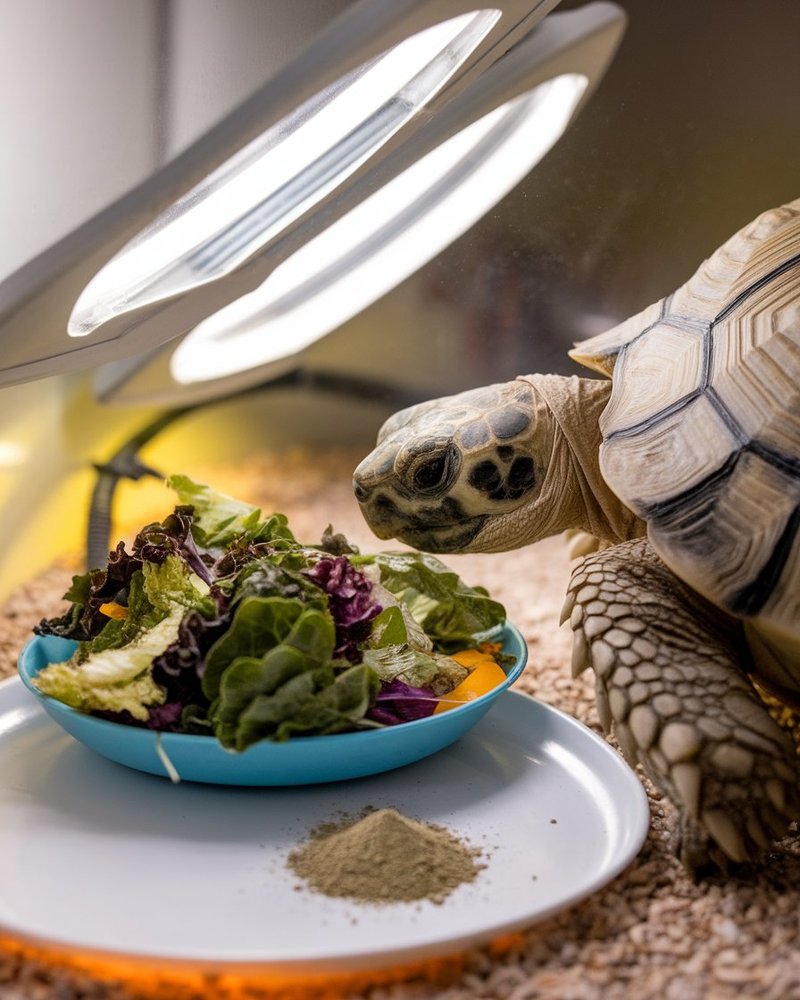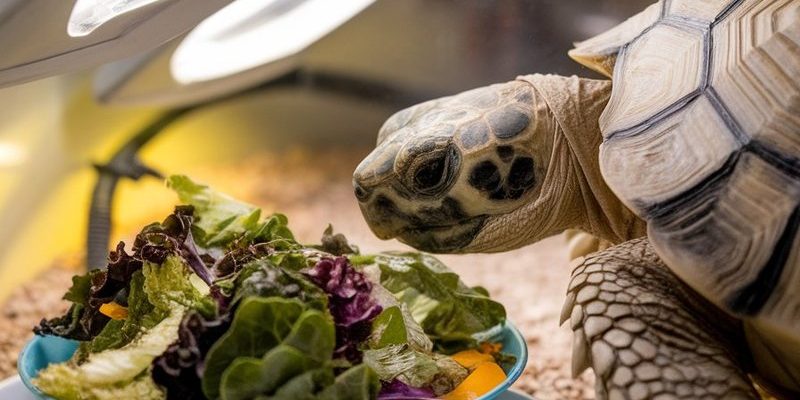
Understanding the Indian Star Tortoise Diet
The Indian Star Tortoise is native to the dry regions of India and Sri Lanka. In their natural habitat, they graze on grasses, leafy greens, and a few fruits. Think of their diet as a buffet of fresh greens and crunchy veggies! When you feed them at home, it’s essential to replicate that variety.
These tortoises are primarily herbivores, so their meals should consist mostly of plant materials. Leafy greens like romaine lettuce, dandelion greens, and kale are great options. You can also offer them flowers like hibiscus or dandelion blossoms for a tasty treat. Here’s a quick checklist of good food to include in their diet:
- Grass and hay (like timothy hay)
- Leafy greens (e.g., kale, collard greens)
- Edible flowers (like hibiscus and nasturtium)
- Occasional fruits (like strawberries or melons)
It’s important to avoid giving your tortoise too many sugary fruits and processed foods. Just like us, too much junk can lead to health issues.
Calcium and Fiber: The Dynamic Duo
While it’s crucial to offer a variety of foods, there are two key components that should never be overlooked: calcium and fiber. Calcium is essential for strong shells and overall health, and fiber helps with digestion. You can sprinkle calcium powder on their food a couple of times a week, especially if they’re not getting enough from their diet.
Make sure the plants you’re feeding them are fresh and pesticide-free. Tortoises can be sensitive to chemicals, and you wouldn’t want to serve them any unwanted surprises!
How Often to Feed Your Indian Star Tortoise
You might be wondering, “How often should I feed my tortoise?” Great question! Generally, adult Indian Star Tortoises should be fed every other day. This schedule allows them to digest their food properly and prevents them from becoming overweight. Think of it like your breakfast, lunch, and dinner routine—but with a tasty salad instead!
Young tortoises, on the other hand, are a bit different. They need more frequent meals to support their growth. Feeding them daily is usually the best approach during their early years.
| Age | Feeding Frequency |
|---|---|
| Hatchlings | Every day |
| Juveniles (up to 1 year) | Every day |
| Adults (1 year and older) | Every other day |
It’s also a good idea to keep an eye on their shell and weight. If you notice any changes, it might be time to adjust their feeding routine.
Tips for a Healthy Feeding Routine
Creating a healthy feeding routine for your tortoise can be simple and fun! Here are some tips to keep in mind:
1. Mix it Up: Variety is crucial. Rotate different greens and flowers in their diet to keep things interesting.
2. Freshness Counts: Always offer fresh food. Wilted or spoiled greens can make your tortoise sick, just like bad leftovers can for us.
3. Hydration: Make sure your tortoise has access to fresh water. A shallow dish is perfect for them to sip from or soak in if they need hydration.
4. Watch for Overeating: Tortoises can be pretty curious and may overindulge if given the chance. It’s important to only provide an amount they can eat in a day.
5. Supplement Smartly: Besides calcium, consider adding fiber supplements if you notice your tortoise isn’t getting enough from their food.
Identifying and Addressing Common Feeding Issues
Even with the best intentions, feeding your Indian Star Tortoise can come with challenges. Sometimes, tortoises can be picky eaters. If you notice your tortoise isn’t munching on their greens like they used to, there could be a few reasons.
One common issue is that they might be stressed or not feeling well. Check their environment—are they too hot, too cold, or feeling cramped? A comfy and safe enclosure can do wonders for their appetite.
If stress isn’t the culprit, consider whether they’re bored with their food. Try switching things up by introducing new greens or edible flowers. Just like us, a little variety can spark interest!
Another point to consider is that some tortoises might go through phases of not eating much. If your tortoise misses a meal occasionally but is still active and healthy, it’s generally not a cause for concern. But if they consistently refuse food, it’s time to consult a vet who knows about reptiles.
Feeding your Indian Star Tortoise is more than just filling up a bowl; it’s about providing a balanced, varied diet that supports their health and happiness. By offering the right foods at the right times and keeping an eye on their preferences and health, you’re setting your tortoise up for a long, healthy life.
Just remember, a happy tortoise can bring so much joy into your home. And seeing your little friend happily munching away is one of the best rewards of responsible pet ownership. So, get ready to create a delightful menu filled with fresh greens and tasty flowers—your tortoise will thank you for it!

